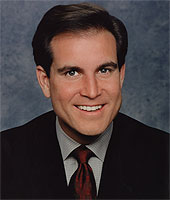The News
This post is one of many, and the first as I start my journey into Sorority Land. If you haven’t guessed, dear Reader, by the blog header, this blog is for those who know nothing and want to find out more about the intriguing social network that is called a sorority. This blog will also venture into debunking the typical National Lampoon stereotypes surrounding these organizations and shed light on the other aspects that make up sorority life (but we’ll cover the parts you know about already too, we all need some fun). For this inaugural post, I conducted a survey as to why girls at the University of Oklahoma decided to join a sorority. My gut instinct told me that the most common answer I would receive was for the social characteristic of the sororities: parties, sisterhood, inter-Greek activities, etc.
The Impact
Through hard work, sweat and a lot of copies, I created a survey that I thought would put some statistical value on the reasons why girls would join a sorority. A copy of the survey is shown below.
Please write in your sorority name here _______________________________
Of the reasons listed, please choose the one that was the most significant for why you joined a sorority.
a) for community service/philanthropy
b) for social aspects
c) academics
d) alumni/legacy
I made 500. My reasoning behind this number was 500 would be enough to provide for a diverse amount of answers from numerous sororities on campus. Out of 380 handed out, only 135 came back completed. 170 were not answered and 75 are MIA. But the results I received from those that answered have some interesting results. 10 sororities total competed in the survey: 40 Kappa Alpha Theta, 30 Pi Beta Phi, 23 Tau Beta Sigma, 16 Delta Delta Delta, 15 Delta Gamma, five Kappa Kappa Gamma, three Alpha Chi Omega and one each from Gamma Phi Beta, Alpha Gamma Delta and Alpha Omicron Pi. Out of 135, 68 answered for social aspects, 36 for community service and philanthropy, seven for academics and 18 for alumni/legacy.
Note: Six of the 135 answered surveys featured multiple answers. These were left out of the graph.

The Context
The University of Oklahoma features a large sorority life population. “The freshman female pledge class that comes in, about 40 percent of them go through our recruitment process,” said assistant director of student life Jill Tran. Last year 42 percent (808) of the freshman female class went through the recruitment process for all sororities. In 2008, 44 percent (908) went through the process and in 2007, 40 percent (828). Tran said the typical turnout is around 40 percent of the freshman female class. Institutional Research is still determining the number for this year’s recruitment process; Tran said that this number could be available as early as mid-October. It will be interesting to see if this number increase from last year or stays the same or decreases. A possible follow up survey with just freshman participating on why they joined a sorority could be in the works.

A greek house on The University of Oklahoma campus at night.
The Human Dimension
Sororities are a concoction of girls, Nike shorts, rain boots, bows and flowers, other fashion trends, parties, date parties, rallies, get-togethers, study hours, community service events, philanthropy, social networks, alumni, classes, meetings and a house all rolled into one complete with being on or near campus. It is a very daunting thing (and confusing) if you have no previous experience or knowledge before hand (Count me in this group for now, we’ll see where I am at in the end). As shown by the results of the survey, this could be a tricky subject (not to mention indecisive since six who answered couldn’t make up their minds on a very straightforward survey).
One note of significance: While handing out the surveys, the most common question I fielded was, “Are you going to make us look bad/write bad things concerning us?” It is my intention to show that sororities are something other than what is preconceived about them. However, as a journalist, if something happens that is deemed to me as newsworthy, it will be reported and covered to the best of my ability.
What’s Next?
In review of this survey, I was not surprised at the results. I figured (and was told when handing out the survey) that most would answer B. That aside, some possibly were not being honest in answering their surveys. However, there was a considerable amount of those that answered A for community service and philanthropy. Are those stereotypes and preconceptions starting to rattle around a little bit? For next week’s focus I will look into the psychological reasoning behind the reasons why girls join sororities and get expert analysis on this survey.
ZH
Here are some quick fun facts on the sororities here at OU
http://studentlife.ou.edu/content/view/68/








.jpg)







